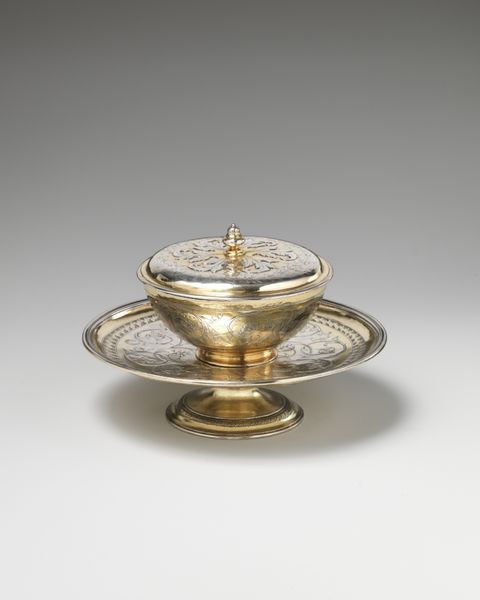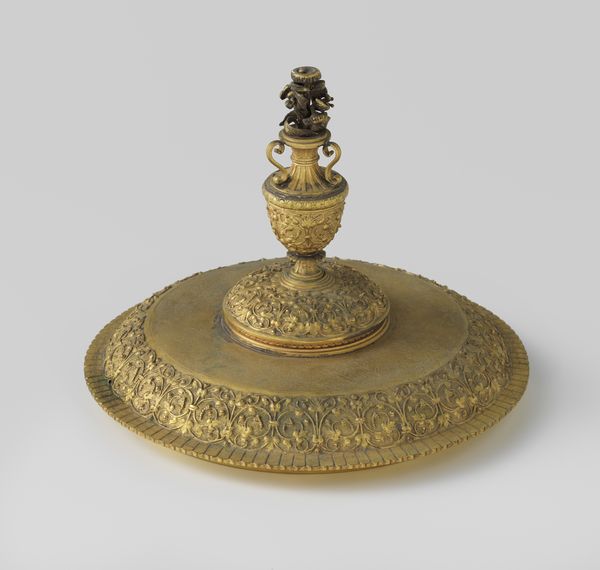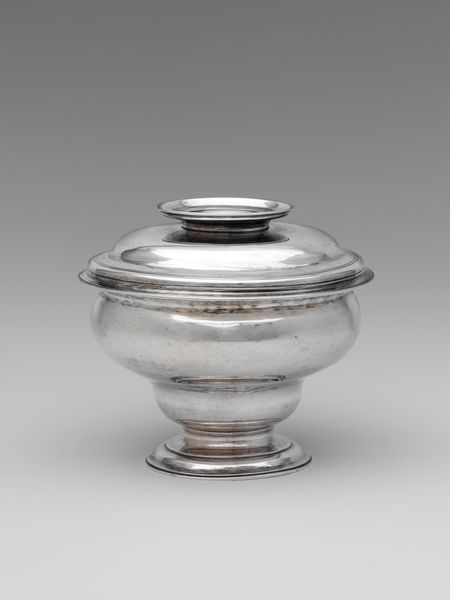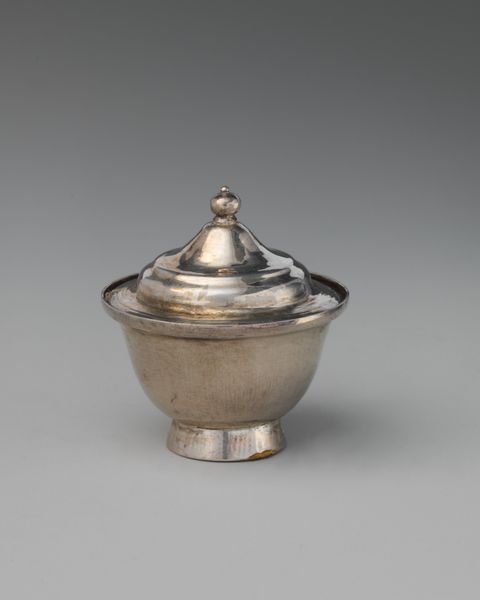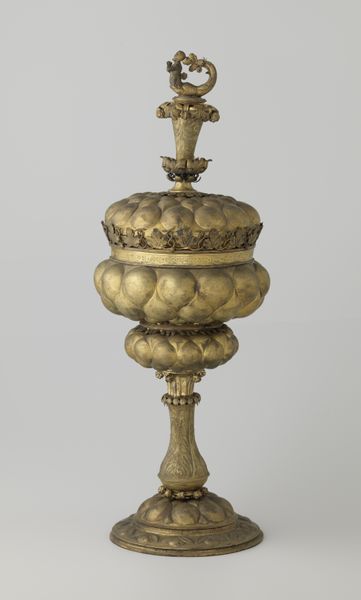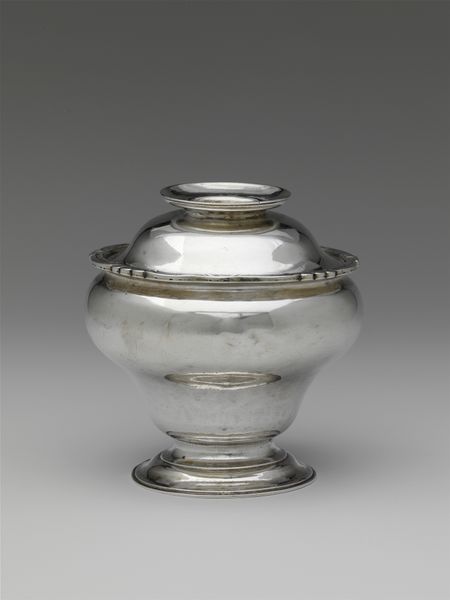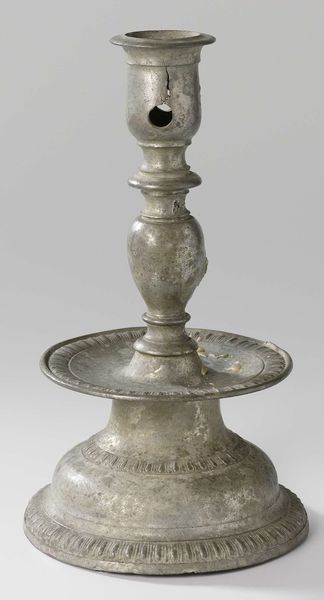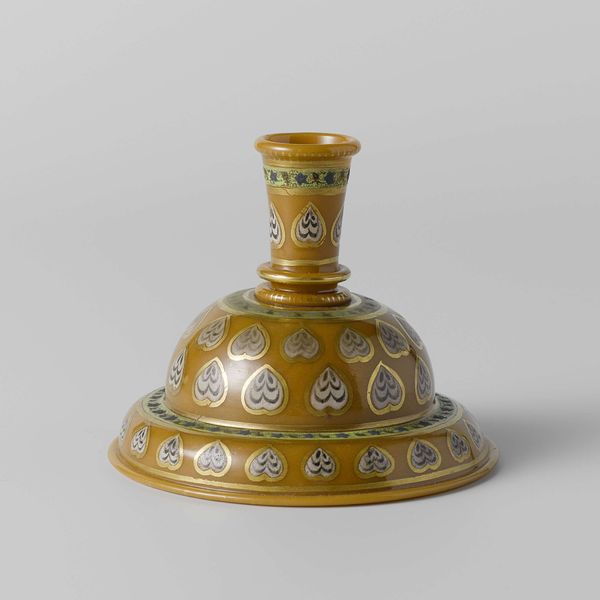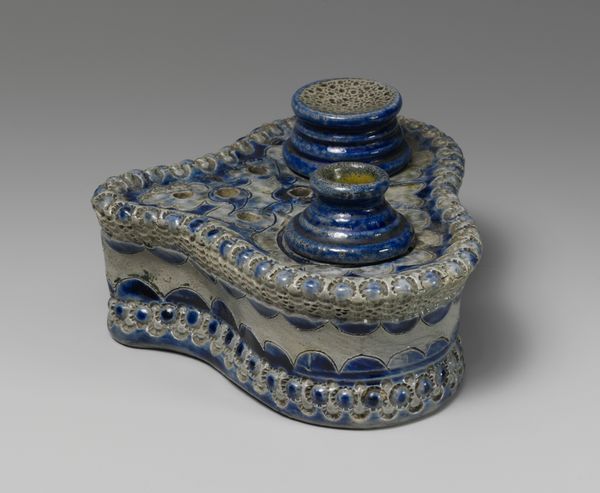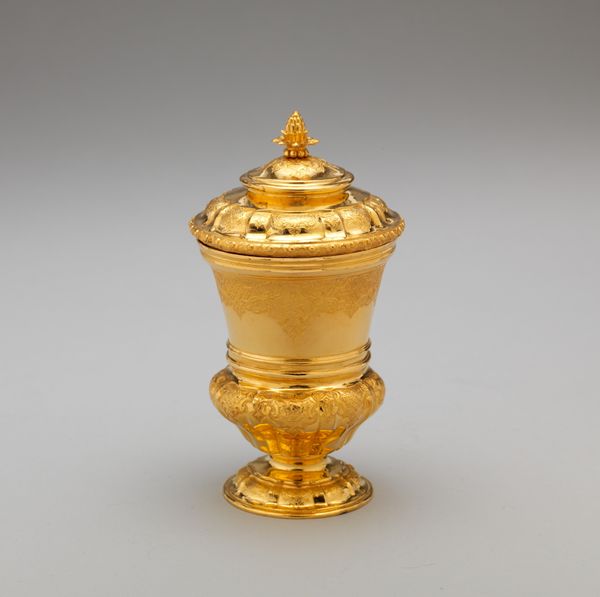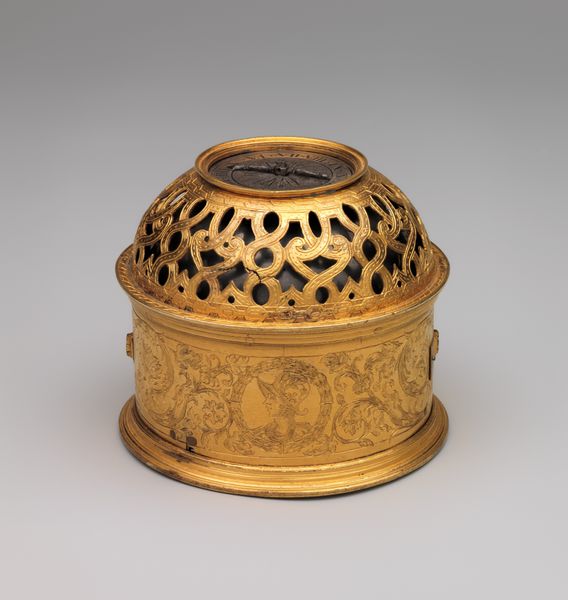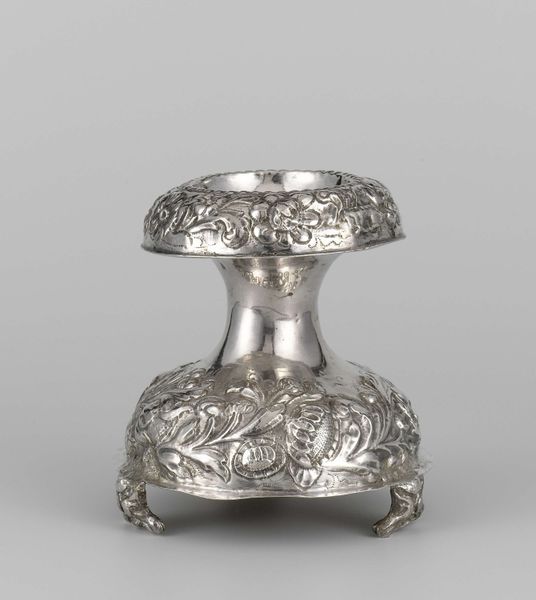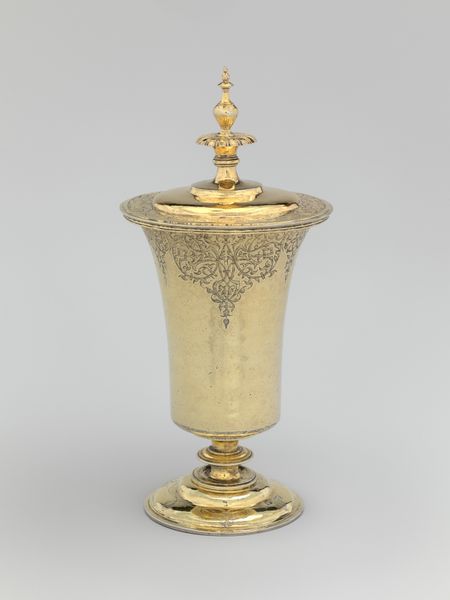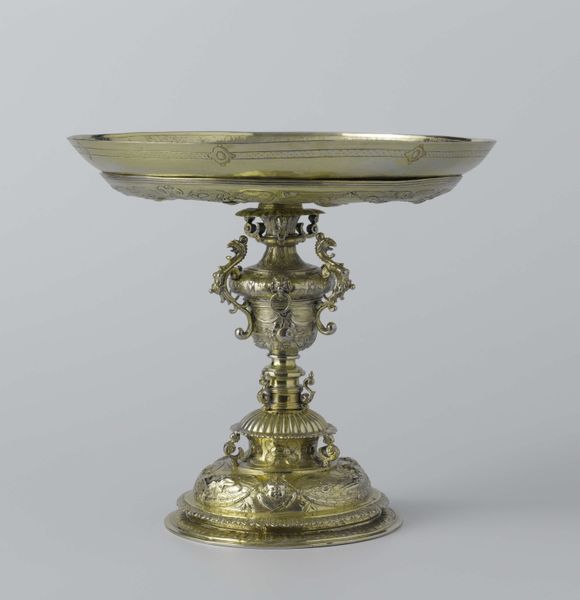
Dimensions: Overall: 7 × 5 7/8 × 5 7/8 in. (17.8 × 14.9 × 14.9 cm)
Copyright: Public Domain
Editor: We're looking at a 19th-century Candlestick by Franchi and Son. The interplay of gold and silver is pretty striking, giving the piece an almost regal quality. What stories does its ornate decoration tell? Curator: The extravagance you see embodies the Baroque revival style of the 19th century. But more than just aesthetic, this piece reflects the burgeoning wealth and social aspirations of the era’s upper class. These elaborate objects functioned as symbols of status, meant to impress. Do you see any particular motifs repeated? Editor: Definitely, there seems to be an abundance of floral and possibly animal designs etched across the piece, like little microcosms thriving within the metalwork. It gives the piece a distinct sense of visual opulence. Curator: Exactly. That intentional density of ornamentation also speaks to its display context. These objects were part of complex arrangements within homes, reinforcing a narrative of cultivation, good taste, and a connection to historical power, albeit imagined. Do you notice how the division of silver and gold creates emphasis? Editor: How the artist alternated using gold in between the silver patterns! Curator: It also reveals how artistry can uphold class structures. While aesthetically interesting, what do we make of the cost of labour needed for such detail, against the context of rising industrialisation and socioeconomic disparity? Editor: That’s an interesting perspective. I guess appreciating it isn't just about its aesthetic, but also considering its social and historical weight. I’ll never look at shiny objects the same way! Curator: Precisely! Decorative arts are seldom just decorative; they reflect and actively participate in the currents of their time.
Comments
No comments
Be the first to comment and join the conversation on the ultimate creative platform.
